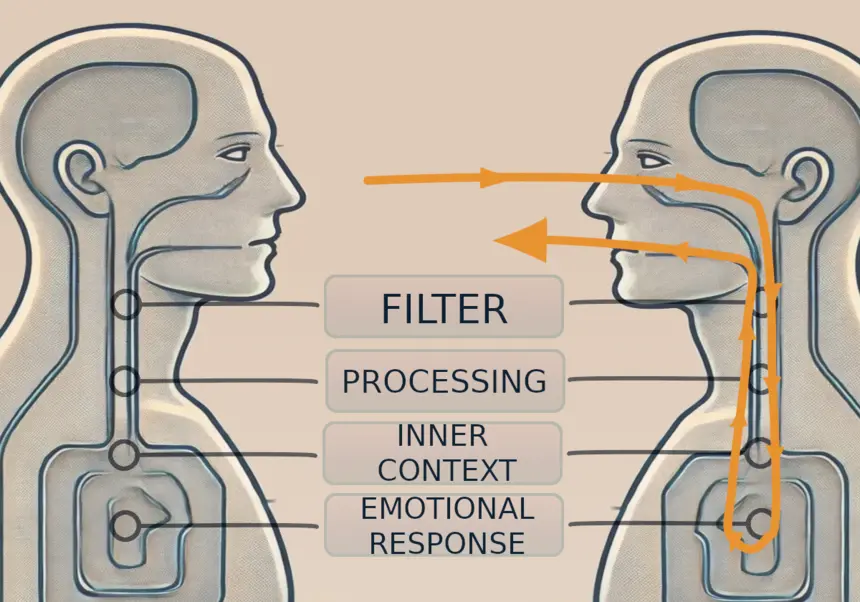Heartfelt Dialogues
How emotions influence our comprehension

How often have you said something with the best of intentions, only to have a friend react in an unexpected way? Most of us have had multiple experiences with the effects of miscommunications. Usually, these are quite easily resolved. Other times, they have devastating effects on projects and relationships.
Definition
Emotional Conversations refer to the dynamics of communication where emotional responses significantly influence the exchange of messages, often leading to misunderstandings and varied reactions based on individual emotional states.
Key Components
- Our Input Filter: Sound waves or visual stimuli reach our sensory organs and are processed by our brains, causing subtle changes between what is sent and what is received.
- How We Process the Message: After registering information, we process it further and assign meaning to it. Most miscommunications occur at this stage.
- Our Internal Context: Our reaction to the meaning we assigned highly depends on our current mental state and memories.
- Our Emotional Response: Based on our internal context, we have an emotional reaction to the message.
- Output Filter: Our response travels back through the previous steps and reaches our output filter, which acts as the last line of defence before expressing something we might regret.
Given all these possibilities to dilute a message and draw wrong conclusions, it should come as no surprise that we often misunderstand each other.
Further Explanation
We value our ability to stay rational, calm, and collected in any situation. Think of your run-of-the-mill action hero. In general, you will find they are extremely Stoic. Nothing phases them. Their adversaries generally become frustrated with their inability to trigger a response from the hero, causing them to lose their cool and make bad decisions to annoy the hero. Their inability to stay calm leads directly to their downfall.
Unlike these characters, most of us are not in total control of our emotions. We tend to get bored when listening to long-winded stories that have no impact on our lives. We tend to become upset or sad when hearing bad news. And we tend to get angry or distraught when things do not go our way.
The idea of “Emotional Conversations” illustrates how complex our communication processes are, incorporating sensory input, cognitive processing, emotional reactions, and the final expression. Each stage can alter the message and lead to misunderstandings, highlighting the importance of being aware of these dynamics.
Background
Origin
The concept of Emotional Conversations has roots in communication theories and psychology, evolving as researchers and practitioners recognized the profound impact emotions have on interpersonal interactions. Historical examples, such as the late nineties NASA Mars orbiter incident, underscore the importance of clear communication and the consequences of misunderstandings.
Application
In practice, understanding Emotional Conversations is vital for improving communication in personal and professional settings. By recognizing the stages of message processing and the factors that influence emotional responses, individuals can better navigate conversations, reduce misunderstandings, and foster more effective interactions.
Comparisons
Emotional Conversations differ from purely rational communication models, which assume that messages are processed and responded to logically. Unlike stoic action heroes who remain unaffected by emotions, most people experience emotional fluctuations that impact their responses. This concept is more dynamic and realistic, acknowledging the human tendency to react emotionally.
Examples
Workplace Feedback
Consider a workplace scenario where a manager provides feedback to an employee. If the employee is already stressed, they might interpret constructive criticism as a personal attack, leading to an emotional response. By understanding Emotional Conversations, the manager can approach the conversation with empathy, ensuring their message is received as intended.
